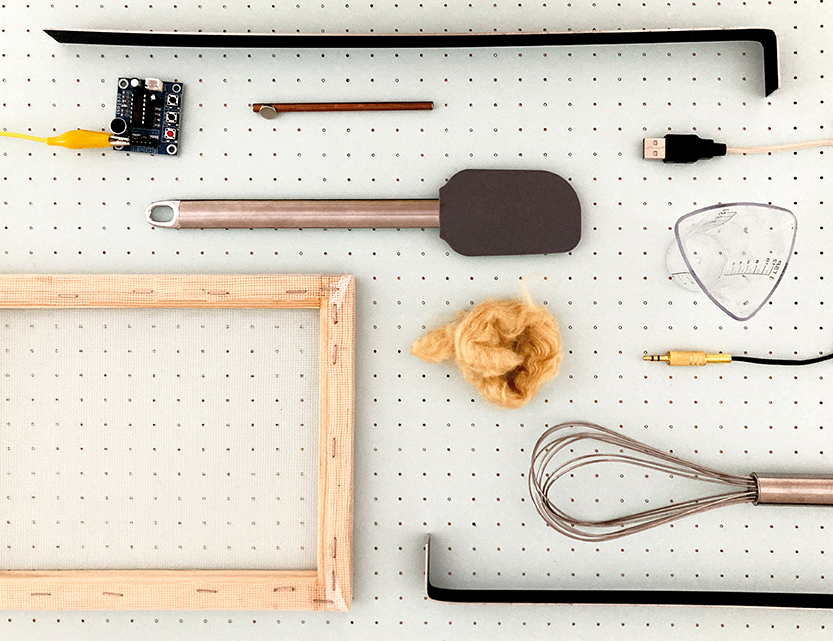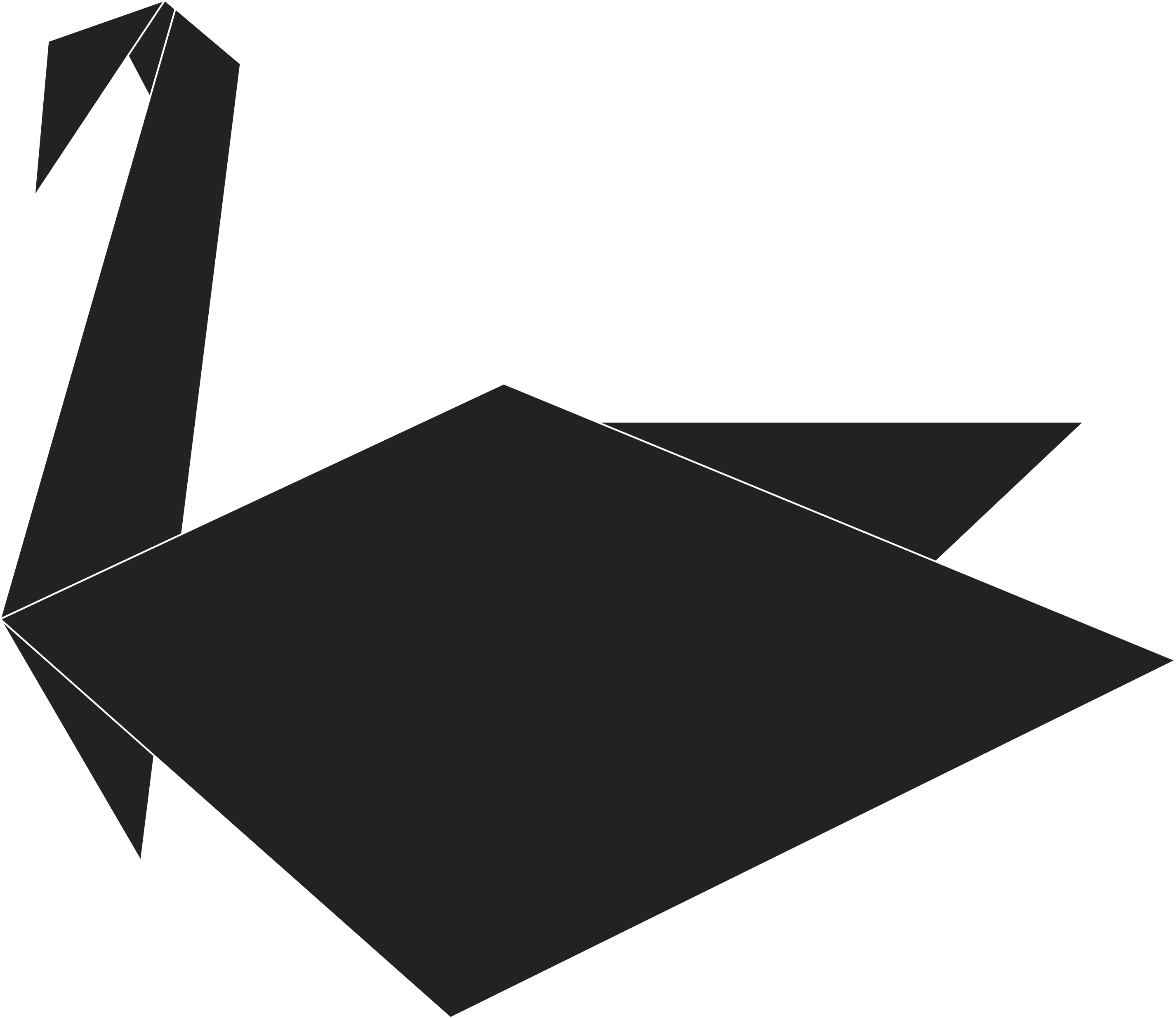Design and Technology
Location
Hauptplatz 6 / ground floor
→Crafting Futures Lab

For the second time we open the Crafting Futures Lab to the public, seeking to interact through showcasing current developments and previewing future investigations and collaborations. Active questioning, learning and collaboration build the core of the Lab and define this year’s instalment: we focus on participatory formats, toolkit design and work-in-progress documentation to provide a platform for student work, research investigations and creative practices. Visitors are invited to collaborate and contribute to the discussion of the social, cultural and aesthetic impacts of work on show, at the nexus of material inquiry, tool intervention, and innovative pedagogies.
Concept: Monja Hirscher, Irene Posch
Contributors: Robert Angerer, Lisa Benedikt, Anna Berger, Laura Devendorf, Stephanie Ehrenecker, Lisa Hametner, Monja Hirscher, Lilo Viehweg, and others.
Department: Design and Technology, Institute for Art and Education

→Workshops
THURSDAY, SEPTEMBER 8th 14:00 – 16:00
Weaving as Material Calculus
(ENG)
Weaving is programming. This connection is often cited in conjunction with Ada Lovelace. This workshop plays with these themes and ideas both on paper and the online tool AdaCAD.org
Please register here for the workshop: https://forms.office.com/r/uzGefP3DfJ
Workshop language: english
Minimum age: 10 years (accompanied by an adult)
(DE)
Weben ist Programmieren. Diese Verbindung wird oft im Zusammenhang mit Ada Lovelace genannt. Dieser Workshop spielt mit diesen Themen und Ideen sowohl auf dem Papier als auch mit dem Online-Tool AdaCAD.org
Anmeldung unter: https://forms.office.com/r/uzGefP3DfJ
Workshopsprache: Englisch
Mindestalter: 10 Jahre (in Begleitung Erwachsener)
Workshop by Laura Devendorf and Irene Posch
Hauptplatz 6, ground floor
FRIDAY, SEPTEMBER 9th 14:00 – 16:00
Photoelectric Blueberries – Making Solar Cells from Natural Dyes
(ENG)
In the early 1990s, Michael Grätzel developed a solar cell that works on the basis of plant pigments. It works in a similar way to photosynthesis and is easy to build with widely available materials. The manufacturing process of dye sensitized solar cells invites to exchange materials, to experiment with new combinations, to explore colors and consistencies and to imagine how energy harvesting might look like.
Please register here for the workshop: https://forms.office.com/r/uzGefP3DfJ
Workshop language: german/english
Minimum age: 14 years
(DE)
Anfang der 90er Jahre entwickelte Michael Grätzel eine Solarzelle, die auf Basis von Pflanzenfarbstoffen funktioniert. Sie hat eine ähnliche Funktionsweise wie die Photosynthese und ist einfach und mit leicht verfügbaren Materialien selbst zu bauen. Das Herstellen einer solchen Farbstoffsolarzelle lädt dazu ein, Materialien auszutauschen, mit neuen Kombinationen zu experimentieren, Farben und Konsistenzen zu erkunden und bietet einen breiten Spielraum für Imaginationen, in welcher Form Energiegewinnung gestaltet sein kann.
Anmeldung unter: https://forms.office.com/r/uzGefP3DfJ
Workshopsprache: Englisch/Deutsch
Mindestalter: 14 Jahre
Workshop with Monja Hirscher
Hauptplatz 6, ground floor
SATURDAY, SEPTEMBER 10th 14:00 – 18:00
Oscillating Bodies
(EN)
10 paricipants max. + drop-in’s
Please register here for the workshop: https://forms.office.com/r/uzGefP3DfJ
Workshop language: german/english
Minimum age: 14 years
Piezoelectric crystals intra-act in mountains, laboratories, technological devices, corals, bones, hair and teeth. They convert mechanical energy into electrical energy and vice versa. This oscillation between different energy states is a lively, material form of information transfer that, for example, stimulates bone growth, makes watches throb at a certain beat, or generates images through sonar and ultrasound devices. Particular oscillators, which have been designed in measurement and communication technologies since the end of World War I, raise critical questions about forms of human perception and related industrial production processes. Where does the becoming of an oscillator begin? Who is involved in which way in this process? What are the political and socio-environmental implications of the choices made in shaping oscillators? The workshop will apply methods of critical fabrication to examine the becomings of oscillators in-between mountains, laboratories, and workbenches. The discursive-material disassembling and reassembling of oscillators in-between the sites of piezoelectric material emergence transcends disciplinary boundaries. By growing and crafting crystals as well as disassembling apparatus, we develop more-than-human narratives that question our relationship to technological design processes. In doing so, we discuss how material scientific knowledge can be explored and made accessible beyond its technological function.
(DE)
10 Personen max. + drop-in’s
Anmeldung unter: https://forms.office.com/r/
Workshopsprache: Englisch/Deutsch
Mindestalter: 14 Jahre
In Bergen, Laboren, technologischen Geräten, Korallen, Knochen, Haaren und Zähnen wirken piezoelektrische Kristalle. Sie wandeln mechanische in elektrische Energie um und vis versa. Diese Oszillation zwischen verschiedenen Energiezuständen ist eine Form des lebendigen, materiellen Informationsaustauschs, der beispielsweise Knochenwachstum
anregt, Uhren in einem bestimmten Takt schwingen lässt oder durch Sonar und
Ultraschallgeräte Bilder erzeugt. Dabei werfen vor allen Dingen die Oszillatoren, die für Mess- und Kommunikationstechnologien seit Ende des 1. Weltkriegs gestaltet werden, kritische Fragen zu Formen menschlicher Wahrnehmung und damit verbundenen industriellen Produktionsprozessen. Wo fängt die Entstehung eines Oszillators an? Wer ist an ihm in welchen Wissens- und Werdenskontexten beteiligt? Welche politischen und sozio-ökologischen Auswirkungen haben die Entscheidungen, die in der Gestaltung von Oszillatoren getroffen werden?
Im Workshop werden mit Methoden des kritischem Fabulierens die Entstehungsgeschichten von Oszillatoren zwischen Bergen, Laboren und Werkbänken untersucht. Das diskursiv-materielle Auseinandernehmen und neu Zusammensetzen von Oszillatoren zwischen den Orten der Entstehung von piezoelektrischen Materialien überschreiten dabei disziplinäre Grenzen. Durch das Züchten und Bearbeiten von Kristallen sowie dem Zerlegen von Apparaturen entwickeln wir mehr-als-menschliche Narrative, die unser Verhältnis zu technologischen Designprozessen hinterfragen. Dabei wird erörtert, wie materialwissenschaftliches Wissen jenseits seiner technologischen Funktion erforscht und zugänglich gemacht werden kann.
Workshop with Lilo Viehweg
Hauptplatz 6, ground floor
SUNDAY, SEPTEMBER 11th 14:00 – 16:00
Photoelectric Blueberries – Making Solar Cells from Natural Dyes
(ENG)
In the early 1990s, Michael Grätzel developed a solar cell that works on the basis of plant pigments. It works in a similar way to photosynthesis and is easy to build with widely available materials. The manufacturing process of dye sensitized solar cells invites to exchange materials, to experiment with new combinations, to explore colors and consistencies and to imagine how energy harvesting might look like.
Please register here for the workshop: https://forms.office.com/r/uzGefP3DfJ
Workshop language: german/english
Minimum age: 14 years
(DE)
Anfang der 90er Jahre entwickelte Michael Grätzel eine Solarzelle, die auf Basis von Pflanzenfarbstoffen funktioniert. Sie hat eine ähnliche Funktionsweise wie die Photosynthese und ist einfach und mit leicht verfügbaren Materialien selbst zu bauen. Das Herstellen einer solchen Farbstoffsolarzelle lädt dazu ein, Materialien auszutauschen, mit neuen Kombinationen zu experimentieren, Farben und Konsistenzen zu erkunden und bietet einen breiten Spielraum für Imaginationen, in welcher Form Energiegewinnung gestaltet sein kann.
Anmeldung unter: https://forms.office.com/r/uzGefP3DfJ
Workshopsprache: Englisch/Deutsch
Mindestalter: 14 Jahre
Workshop with Monja Hirscher
Hauptplatz 6, ground floor

